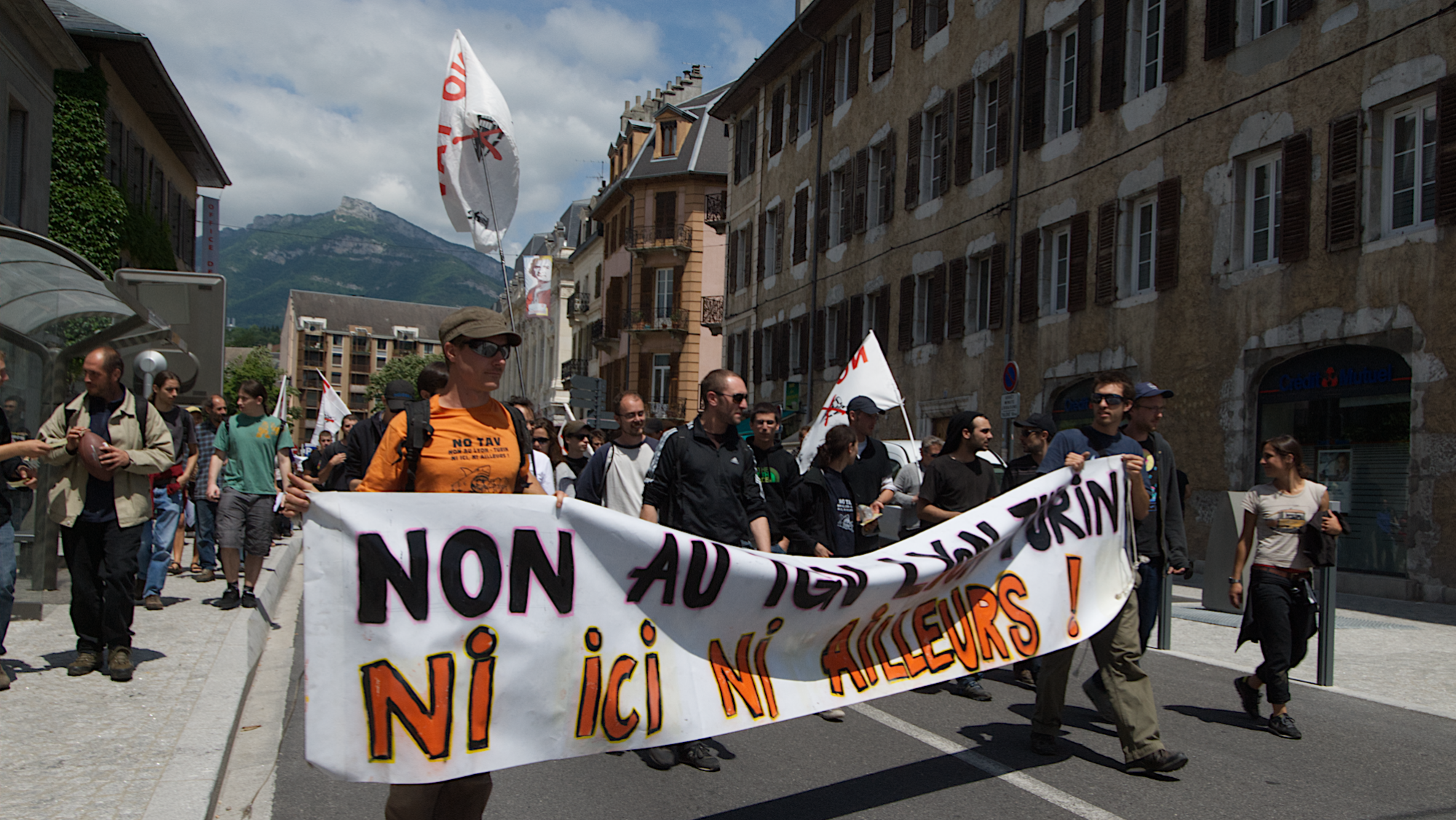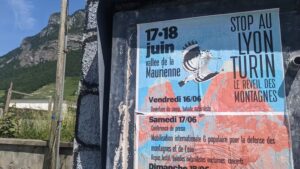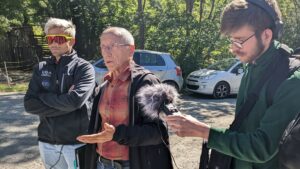Publications
Lyon-Turin: a sea snake and a field of investigation for researchers
 © Leïla Shahshahani
© Leïla Shahshahani
The project for a new rail link between Lyon and Turin, conceived at the beginning of the 1990s, is of great interest to researchers in the humanities and social sciences, as the protests that punctuate its development unfold.

On the eve of a weekend of Franco-Italian mobilization planned for June 17 and 18 in the Maurienne region, Mikaël Chambru – scientific co-coordinator of Labex ITTEM – traces the genesis of French opposition to the project for The Conversation. A researcher with the Groupe de recherche sur les enjeux de la communication (Gresec) at the Université Grenoble Alpes (UGA), he is interested in public controversies and socio-environmental mobilizations in the mountains, illustrating the divergence of visions and expectations in terms of ecological and social transition.
On the subject of this new rail line, he sums up: ” For its promoters, it is presented as a transport infrastructure useful for the ecological transition. According to them, it would eventually relieve the Alpine valleys of heavy goods traffic, encouraging a modal shift from road to rail. Opponents, on the other hand, see the project as pharaonic, pointless and environmentally destructive. They argue that the existing rail line between Lyon and Turin, which is currently under-used, could, once renovated, reduce freight transport by truck. ”
 Mikaël Chambru also led an educational workshop on the controversies surrounding the Lyon-Turin project with UGA Master CCST students. Based in Aussois in the Maurienne region, the workshop gave rise to several forms of mediation: a stream on Twitch, a public restitution, scientific mediation workshops with pupils from a secondary school in Chambéry and the production of podcasts.
Mikaël Chambru also led an educational workshop on the controversies surrounding the Lyon-Turin project with UGA Master CCST students. Based in Aussois in the Maurienne region, the workshop gave rise to several forms of mediation: a stream on Twitch, a public restitution, scientific mediation workshops with pupils from a secondary school in Chambéry and the production of podcasts.
Geographers are also looking at the Lyon-Turin project. Kevin Sutton, researcher at the Pacte laboratory (UGA), wrote in the Revue de géographie alpine in 2016: “French and Italian protests have different geneses. The alternative territoriality promoted by the No TAV movement is not transposable, even though it constitutes its strength and singularity (…) The absence of an Alpine frame of reference on the French side can be understood by the history of a protest that essentially originated in peri-urban forelands (…) Both Chimilin and Chapareillan are situated in the in-between areas whose identity is not associated with a “mountain” dimension, but with “rural” and “agricultural” ones. In the Val de Suse, these three aspects merge to form a valley identity, i.e. an alpine-mountain frame of reference. On the Italian side, the landscape argument is understood as a form of inhabiting an idea of the mountain, whereas on the French side it’s more a question of land development.”
Associated with the Telimep research project – Dynamiques de transformation et de perception des territoires de montagne (Dynamics of transformation and perception of mountain territories) – carried out within the Labex ITTEM, Kevin Sutton contributed to thebook Montagne et liminalité, les manifestations alpines de l’entre-deux XVIe- XXIe siècles (ed. PUG/UGA), exploring notions of boundaries, circulations, conflictualities and identities in the mountains. Geographers Kirsten Koop and Pierre-Antoine Landel (Pacte) write the following chapter: ” (…) The TAV risks relegating the Susa Valley to the status of a margin between dynamic, globalized poles. In this context, the emergence of a new imaginary, a new territorial identity in the wake of this political struggle is producing a new territoriality (…)”. The gaze of historians is also called upon. ” From the barricades under the Duke of Savoy to the blockades of tunnels by associations mobilized against the Lyon-Turin (TAV) project, mountain morphology favors the closure of circulation and thus resistance to political conquest or economic normalization “, writes Stéphane Gal (Larhra) in his introduction, co-written with Marie-Christine Fourny (Pacte), with whom he edited the book.
Anne-Marie Granet (Larhra) also offers a historical perspective in her article L’aplanissement de la montagne: un rêve de techniciens et d’aménageurs européens, published in the journal Histoire des Alpes, edited by the International Association for the History of the Alps in 2016: ” In this long history of traffic, passages and borders – whether natural or state-owned – the major projects planned and underway on a European scale are radically transforming the relationship with the territory, since the aim is to create passages within the Alpine arc that will enable massive and rapid flows (…). The latest of Europe’s major construction projects, the Lyon-Turin project is one of the most recent examples of this type of development, with its gigantic technical, financial and political ambitions, and which revives the dream of easy, fast, risk-free travel through the Alps, without interruption during the winter months. (…) For the historian of the Alps, this means tackling the future of these territories at an important moment in their reconfiguration within the European space, without neglecting border issues “.
Two days before the planned mobilization in Savoie against the Lyon-Turin project, the associations Cipra France and Mountain Wilderness published a press release on June 15, 2023, in which they asserted that “it’s time to rethink our mobilities in a global and coherent way. It is neither possible nor enviable to build ever-bigger infrastructures. This runs counter to the objective of the Alpine Convention, which is precisely to limit such infrastructures in order to preserve the Alps, which are first and foremost a source of life, not a transportation channel.”
With the prospect of new access routes to the cross-border tunnel postponed until 2045, there is no doubt that this controversy will continue to fuel the work of researchers from all disciplines.
